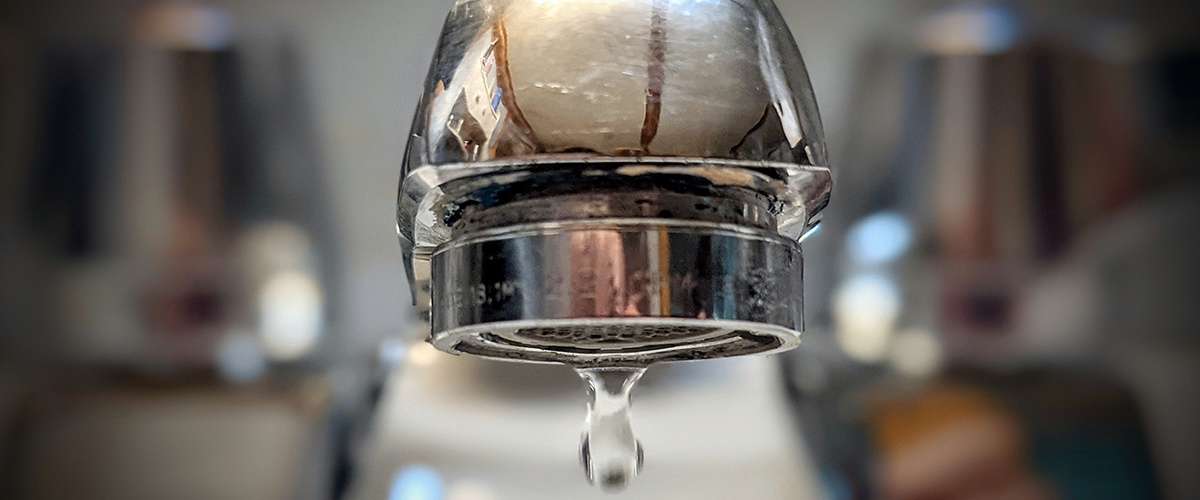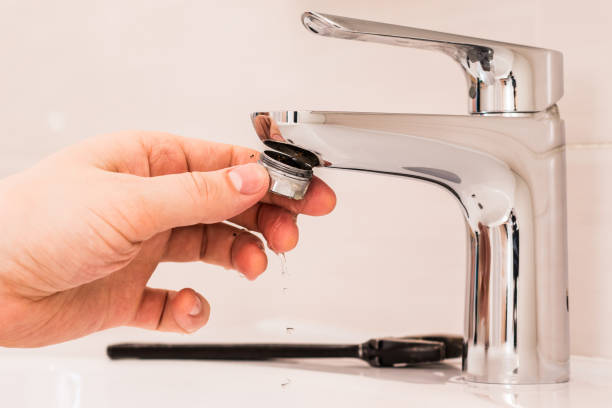Your Significance of Correcting a Broken Faucet
Your Significance of Correcting a Broken Faucet
Blog Article
The article author is making a few great points about How to Fix a Dripping or Leaky Faucet in general in this content underneath.

Trickling taps could appear like a minor hassle, however their impact exceeds just the nuisance of the sound. From drainage to incurring unnecessary monetary costs and health threats, disregarding a trickling tap can bring about different consequences. In this write-up, we'll delve into why it's essential to address this common household issue without delay and effectively.
Waste of Water
Environmental Influence
Dripping faucets contribute substantially to water wastage. According to the Epa (EPA), a solitary tap leaking at one drip per second can waste more than 3,000 gallons of water annually. This not only stress water resources yet likewise influences communities and wild animals dependent on them.
Financial Expenses
Raised Water Bills
Past the ecological impact, leaking taps can pump up water costs considerably. The gathered wastage in time equates into higher energy costs, which can have been avoided with timely repair work.
Possible Building Damages
Furthermore, long term dripping can lead to harm to fixtures and surfaces bordering the faucet. Water buildup can cause discoloration, corrosion, and also structural concerns if left ignored, leading to added repair service expenses.
Health and wellness Worries
Mold and Mildew Development
The constant presence of wetness from a dripping faucet develops an optimal environment for mold and mold growth. These fungis not only compromise interior air top quality yet likewise position health dangers, especially for individuals with respiratory system conditions or allergic reactions.
Waterborne Illness
Stationary water in trickling taps can end up being a breeding ground for microorganisms and other pathogens, enhancing the danger of waterborne diseases. Pollutants such as Legionella bacteria prosper in stationary water, possibly leading to significant illnesses when ingested or inhaled.
Do it yourself vs. Specialist Repair
Pros and Cons of DIY Repair Work
While some may try to take care of a dripping tap themselves, do it yourself repair services feature their very own set of challenges. Without appropriate expertise and devices, DIY efforts can aggravate the problem or bring about insufficient repair services, extending the issue.
Advantages of Employing an Expert Plumber
Hiring an expert plumber makes sure that the underlying cause of the dripping faucet is attended to effectively. Plumbings possess the competence and equipment to detect and fix tap problems efficiently, saving time and lessening the danger of more damage.
Step-by-Step Guide to Dealing With a Dripping Faucet
Devices Required
Before attempting to deal with a leaking faucet, gather the essential devices, including an adjustable wrench, screwdrivers, replacement components (such as washing machines or cartridges), and plumber's tape.
Typical Faucet Issues and Their Solutions
Identify the kind of faucet and the particular problem creating the drip. Common troubles consist of damaged washing machines, corroded shutoff seats, or faulty O-rings. Refer to manufacturer directions or on-line tutorials for step-by-step assistance on repairs.
Safety nets
Routine Maintenance Tips
To stop leaking faucets, perform regular upkeep such as cleaning aerators, examining for leaks, and changing worn-out components immediately. Furthermore, take into consideration installing water-saving tools or upgrading to extra efficient components.
Relevance of Prompt Services
Dealing with trickling taps as soon as they're noticed prevents additional water wastefulness and prospective damages, eventually saving both water and money over time.
Impact on Residential Property Value
Assumption of Well-Maintained Residential Property
Preserving a residential property in good condition, consisting of dealing with maintenance problems like leaking taps, boosts its perceived value and worth amongst prospective purchasers or tenants.
Influence on Resale Value
Qualities with well-maintained plumbing components, including faucets, command greater resale values in the property market. Attending to dripping taps can add to a favorable impression throughout residential or commercial property assessments and settlements.
Environmental Duty
Specific Contribution to Conservation
Taking obligation for dealing with trickling taps lines up with wider efforts towards water preservation and ecological sustainability. Every individual's actions jointly make a significant effect on preserving precious sources.
Lasting Living Practices
By prioritizing timely repairs and embracing water-saving practices, people contribute to lasting living techniques that profit both present and future generations.
Conclusion
Attending to a trickling tap exceeds mere comfort; it's a vital step towards saving water, reducing economic prices, and safeguarding health and wellness and property. Whether through DIY repair services or specialist support, acting to take care of leaking faucets is a small yet impactful way to advertise liable stewardship of resources and add to a much healthier, a lot more sustainable future.
How to Fix a Dripping or Leaky Faucet
A leaking faucet is one of the most common problems that homeowners encounter, but it being commonplace doesn’t make it any less annoying. The constant drip drip drip of a leaking bathtub faucet, showerhead, or sink tap can disturb your home’s serenity. Left neglected, a dripping faucet can also result in higher water bills and discoloration or mold growth in your sink or plumbing fixtures.
Fortunately, you don’t have to be a trained plumber to know how to stop a dripping faucet. With some basic tools, replacement parts, and a little patience, leaky faucet repair is a breeze. In this article, we’ll explain what causes dripping faucets and how you can fix them.
What Causes a Leaking Faucet?
Kitchen and bathroom faucets come in all manner of designs, but most involve some combination of valves, O-rings, seals, and washers. The O-ring is usually the weakest link, but any one of these pieces can wear down over time. Heat, moisture, temperature fluctuations, minerals, mold, and movement can contribute to warping and corrosion, breaking the watertight seal. This just comes with the territory of being a homeowner. Everything is always subject to wear and tear, and some component parts of your appliances and fixtures need to be replaced on occasion. At least replacement O-rings are cheap!
More rarely, dripping faucets can be a symptom of excessively high water pressure. Were this the case in your home, you would probably notice that the leak is not isolated to one faucet. Water pressure issues are harder to resolve on your own. We recommend contacting a professional plumber if you suspect your water pressure is too high.
How to Fix a Dripping Faucet
Pipe wrench or monkey wrench Allen wrench set Screwdrivers Old towel or rag Shut off the water.
Before you do anything, you need to turn off the water to keep from drenching your kitchen or bathroom. You should find a valve under the sink and against the wall. Once you’ve turned this valve, try turning the faucet on to confirm that the water source has been cut off.
If you can’t locate your local valve for the faucet you’re working on, you can always shut off the water to the house at the main valve. Of course, this will prohibit anyone from using the sinks, showers, or toilets while you’re working on the faucet that’s giving you trouble.
Plug or block the drain.
You’ll be disassembling the faucet and removing some small bits of hardware. Plug the drain with a stopper or rag to avoid the possibility of a small screw falling into your P-trap.
Take apart the faucet assembly.
There are several varieties of kitchen and bathroom faucets, each with its own manner of assembly. For detailed instructions on how to disassemble your faucet, you can refer to the fixture’s manual or contact the manufacturer. If you know whether you have a ball, disc, cartridge, or compression faucet, you can find detailed schematics online.
In general, you need to begin by removing the faucet handles. You might notice a small screw that you’ll need to remove with a screwdriver or Allen wrench. If you don’t see any visible securing hardware, it’s likely hidden under a decorative cap that can be unscrewed or popped off with flathead screwdriver.
Remove each piece methodically, consulting a schematic when necessary. Take notes or arrange the pieces in such a way to make it easier to correctly reassemble the faucet later.
Remove the cartridge.
Once you’ve removed the handles and securing hardware, you should be able to remove the valve cartridge or stem. Some cartridges will slide right out. Other faucet models will require you to loosen a nut with a pipe wrench before you can remove the valve stem.
Examine the exposed hardware.
With the cartridge or stem removed, inspect the component parts. Check the rubber O-rings for wear and tear. Also examine the seat washer for corrosion or other damage. These pieces are usually the responsible parties for a dripping faucet, but it’s worth inspecting the other component parts while you have the faucet disassembled.
Find replacement parts.
Once you’ve identified which faucet component has failed, find an identical replacement. Your local hardware store should have O-rings, seat washers, and other standard components in stock. If you have a luxury or uncommon faucet, you may have to contact the manufacturer for a replacement part.
It’s a good idea to take your old parts with you to the hardware store so you can compare them with the store’s inventory and be sure you’re purchasing the correct replacement.
Reassemble the faucet.
With your new parts in hand, reconstruct the faucet and handles. Don’t be tempted to overtighten screws or nuts. You might think this could create a better seal, but it can instead damage or bend a delicate part of the assembly and create a new problem for you.
Turn on the water and test the faucet.
The only thing left to do is test your work. Unplug the sink, turn the water back on, and try the faucet. Congratulate yourself on a job well done!
https://www.libertyhomeguard.com/how-to-fix-a-dripping-or-leaky-faucet/

As a devoted person who reads about Why It's Important to Fix Leaky Faucets, I imagined sharing that editorial was a good thing. In case you enjoyed our blog entry kindly do not forget to share it. Thank you for taking the time to read it.
Report this page